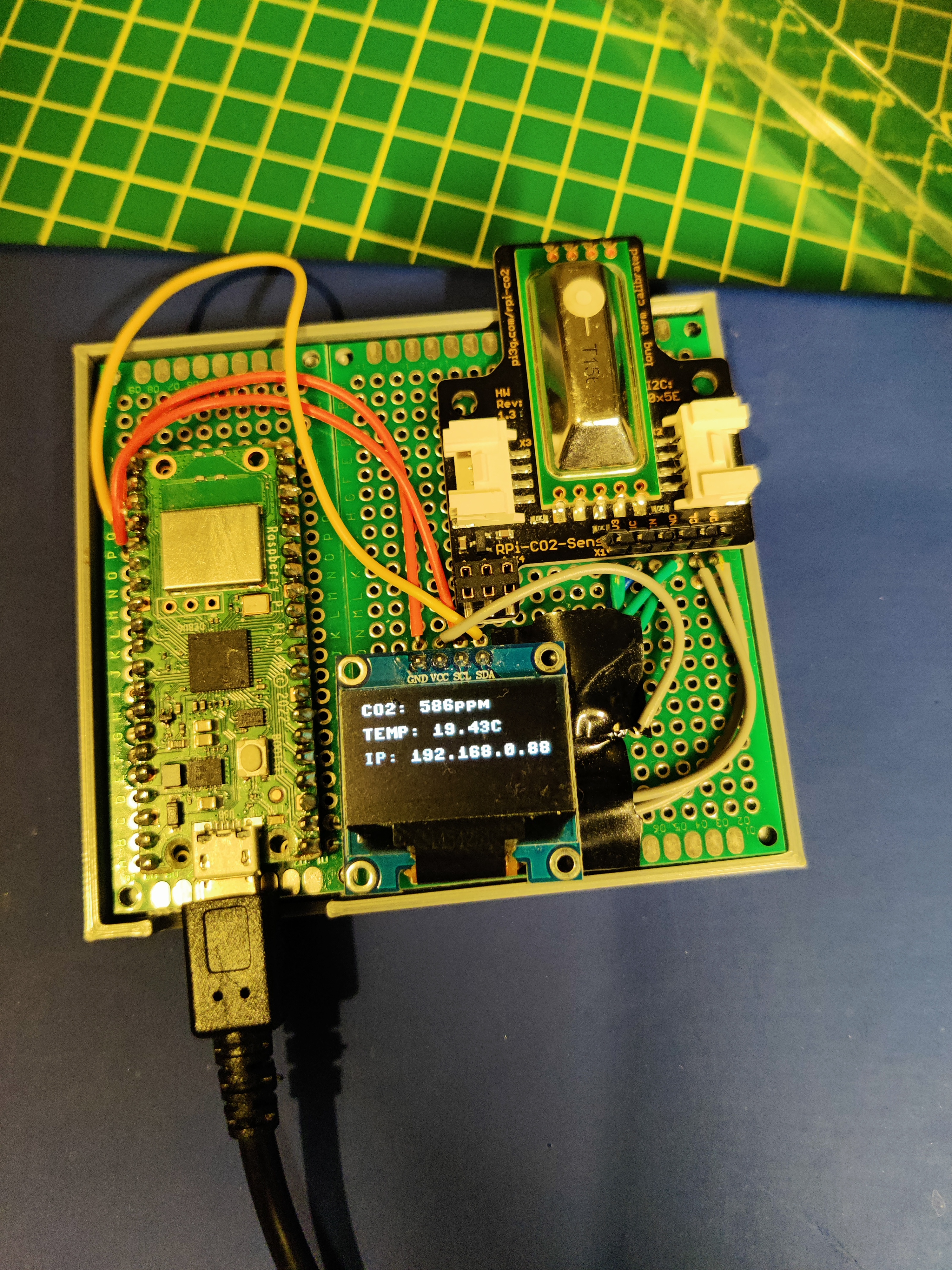Flink home is a scala streaming application run on my at home raspberry-pi cluster. The aim of flink home is to ingest data from various CO2 sensor nodes in my home (powered via the Pi Pico W), clean the data, and sink it to InfluxDB which can be used as a source in grafana.
The data from this will then be used to automate the fan speed of my home ventilation system once the CO2 levels in a particular room reach a certain pre-defined threshold. We will do this using a custom made client - Bento.
There will be an accompanying blog post for this project added here in the very near future.
The components I'm using in this project are as follows. All of these can be found quite easily online for purchase. I've also added optionally the single room heat recovery unti I used for ventilation in my home. While this is not necessary, I myself use data from the CO2 sensor to automate & control the fan speed in any given room in my home.
- RPI SHD CO2 Sensor (Raspberry Pi CO2 Sensor Breakout board)
- I2C OLED Display
- Double Sided PCB Boards
- Single Room Heat Recovery Unit
In my particular case, I had some things running out of the box for this project already such as Grafana and and existing MQTT broker all running within my at home K8s cluster running a couple of raspberry-pis as example.
Going forward, this project assumes you can fill in the holes which I may have left out, or modify & taylor anything in this project to suite your own needs.
Code and documentation pertaining to the setup on the Raspberry Pi Pico can be found here.
Note, I have not tested this manifest myself, as I am using a cloud broker provided by HiveMQ. You can also go ahead and use this, or continue and apply the manifests as described below, just be consiouc that you may (likely) will need to make further modifications.
### Apply resources
kubectl apply -f kubernetes/influxdb/manifest.yamlCode and documentation pertaining to the setup and running of an MQTT broker can be found here.
First, make any needed modifications to the influxdb manifest, such as changing secrets to your own desired configuration, changing the namespace and anything else you deem relevant. Then apply the changes.
### Apply secrets
kubectl create secret generic influxdb-secrets --from-file=kubernetes/influxdb/manifest.yaml
### Apply resources
kubectl apply -f kubernetes/influxdb/manifest.yamlCode and documentation pertaining to the setup and running of an InfluxDB can be found here.
N.B: The docker image associated with this manifest is a 64bit image, which means you will need to have a 64bit OS to run it. This is important if you plan to run this on a raspberrypi.
Similarly to InfluxDB, it is best to first go over the flink manifest and make any modifications you deem necessary before continuing. For instance, I have added a custom node affinity to the manifest to ensure the pods will be scheduled only on 64bit nodes in my cluster. This may not be needed if you can ensure anywhere you plan to run this it will be on a 64bit OS.
# Flink
kubectl apply -f kubernetes/flink/manifest.yamlCode and documentation pertaining to the setup and running of an Apache Flink be found here.
N.B: The docker image associated with this manifest is a 64bit image, but you can find an image that works for your system at Cian911/bento.
Bento is a go client that connects to an InfluxDB source and controls your blauberg-vento fans based on some criteria/threshold/value you provide. More info about its use and configuration can be found on the associated repository.
kubectl apply -f kubernetes/bento/manifest.yml.STL files can be found for the custom sensor housing and case here.

